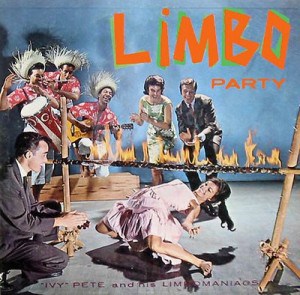StoptheCap! reader Tim wrote this morning to alert us that Fox News had picked up a story from the Sunday Times of London warning of the great Internet brownout about to afflict us all. It turns out our old friends at Nemertes Research have trotted out another sensationalist study (right on cue after a month of nonsense about it from Time Warner Cable) predicting our online demise from too many users.
But is it any good?
 The original article sure wasn’t. John Harlow, who needed reporting assistance from Adam Lewitt, couldn’t be bothered. Lazy reporters who reprint sensationalistic theories as fact without ever bothering to ask any questions about the source or challenging the theories, is a hallmark of sloppy, never break a sweat journalism. Even Ted Ritter, quoted in the story, called the journalism sensationalistic and said the reporter “took great liberty with my quotes,” and he’s the guy pushing the theory!
The original article sure wasn’t. John Harlow, who needed reporting assistance from Adam Lewitt, couldn’t be bothered. Lazy reporters who reprint sensationalistic theories as fact without ever bothering to ask any questions about the source or challenging the theories, is a hallmark of sloppy, never break a sweat journalism. Even Ted Ritter, quoted in the story, called the journalism sensationalistic and said the reporter “took great liberty with my quotes,” and he’s the guy pushing the theory!
I keep asking, “where’s the media” on so many issues that deserve more than a slapdash reprint of the cheat sheet on the study, toss in a few quotes and call it a day. But then I realized in this day and age, we are the media.
So I plodded my way through the report. It’s the same alarmist stuff as the last one, and the one before that.
They said it in 2007 and the only scurrying that came after it was from Nemertes’ clients running to Kinkos to make copies and get them into the hands of legislators to justify whatever political agenda they were selling that season (no to net neutrality, yes to bandwidth caps, yes to government funding or tax credits for private broadband, etc.)
And that is exactly the problem.
Nemertes’ findings are like magic sprinkles on top of a Baskin-Robbins ice cream cone. They work with every flavor to justify whatever you want.
On all such matters, the only fact you have to remember is to “follow the money.” Who pays for this research?
Ted Ritter from Nemertes answers:
Our research is funded by our clients: Vendors, service providers and fortune 500 enterprise.
And the results of this research are celebrated by all of the above: Equipment suppliers love it because they can trumpet the scary findings on their “upgrade now” brochures. ISPs love it because they can claim they have to cap and tier customers in order to buy equipment to combat the “exaflood.” Proponents of government funding for the Internet love it because it hints major funding to subdue the crisis might be needed.
Without those supporters, this study would never have been done in the first place. Additionally, Nemertes appears to have an additional revenue stream from licensing the results of the study to interested clients, who wouldn’t bother unless they had a vested interest in trumpeting the findings.
In other words, this is a classic case of “conflict of interest.” But if you order in the next 20 minutes, you also get these extra benefits:
Since we all know the results are made public, and media availabilities are prominently mentioned on the website, a paying client has the bonus of a seemingly independent third party who will be available to discuss the findings and results. That’s a quick path to media coverage, the more sensational the better.
Since it’s Nemertes saying it, that keeps the clients’ hands clean when they license a purportedly independent report and mention it prominently when delving into public policy lobbying, public relations, and marketing strategies.
It’s also unsurprising that Nemertes stays out of specific public policy recommendations, because that is exactly what clients want. They’ll provide their own spin as they see fit, just as happened in 2007 and will no doubt happen again. Why pay for a study that makes a public policy conclusion you oppose?
It’s all very neat and tidy, especially when Mr. Ritter complains that the media was sensationalizing the results. I’m sure his clients think exactly the opposite. But then sensationalism and spin follows Nemertes’ report wherever it appears. It drew panic headlines in 2007, was dredged up again by a few marketing people to justify broadband usage caps in 2008, and largely the exact same panicky coverage is appearing now, coincidentally in the same month Time Warner used Nemertes’ theories to justify their Internet rationing effort.
One local Rochester television newscast even suggested a router failure responsible for a Time Warner service outage this past weekend might have been the result of an Internet “brownout.” That was Baskin-Robbins Flavor #7, “Very Berry Strawberry.” See, it does work for everything!
The Sunday Times doesn’t have time to check the facts with anyone else, and there are many others who have a different view on this. Andrew Odlyzko is a professor of Mathematics at the University of Minnesota, and has been tracking Internet growth since 2001:
Nemertes Research has an updated version of their study from last year, and continues to predict a collision between demand and supply, unless dramatic increases in investment are made. The basic, and highly debatable, assumption behind their work, though, is that traffic is growing at 100% per year or more, and will continue to do so for the next half a dozen years. So far there is little evidence of that, though.
Nemertes waves away Odlyzko by claiming that their discrepancy in data with his comes from the ‘secret Internet’ private backbones. Of course, that data Odlyzko can’t get from them is the same data Nemertes cannot get from them either. So we are left with an assertion without raw data.
The creepy part of all of this is, I could use Nemertes’ study to help the cause on StoptheCap! Nemertes says nothing about the need for usage caps and limits — it instead suggests that insufficient infrastructure spending will cause the Internet to brown out causing loss of innovation, jobs, and all the rest. So I could use Nemertes to justify why cable companies have a basic responsibility to stop cutting infrastructure spending and start increasing it, instead of capping people to ration the net.
But I won’t, because I have integrity. I realize that no report is worth mentioning as factual and accurate without the underlying assurance of its independence and lack of bias. As I wrote Mr. Ritter:
If you want to do reports for clients who subscribe to your service, then send them the results and don’t make them public. Let the clients make the report public, because they are effectively paying for it. It prevents the accusation you are astroturfing on their behalf by insulating their involvement and investment in the findings.
Otherwise, a list of all supporting clients by name, in addition to whether they have been licensed to use the material, absolutely must be added to the bottom of your findings, or those findings are rightfully dismissed out of hand as bought and paid for.
Alternatively, if you are doing this in the public interest, do not accept funding from those with a vested interest in the findings, and do not license their use by anyone. Let people read them on your site, in full and in context, not after some marketing group has massaged the relevant points for their latest strategy.
Ultimately, I think Nemertes basic conclusion that the Internet is growing, and fast, is borne out by reality — just not at the panic stricken pace they suggest. I also think that just like every other technological challenge we have faced, innovation will bring solutions to problems we fear and panic about today, but aren’t that big of a deal tomorrow.
The short answer continues to be, upgrade the network. The bad answers include another effort by some of those that we’re likely to discover paying for Nemertes’ studies to advocate supersizing profits through reduction in competition, installing artificial usage limits to retard the growth curve, and trying to legislate protectionism for incumbent providers.


 Subscribe
Subscribe




Mr. Kim then suggests he doesn’t necessarily like his electricity or water rates, but he conserves because there is a penalty for unrestrained use. Actually, there isn’t really a penalty at all. Gas, electric, and water service are sold on a true metered basis. There are no “bucket plans” for these services. They are also utilities, and their rates are either regulated outright, or carefully monitored in the limited competition models some states have for these services.
Your water company bears the minimal cost of pumping a gallon of water from a body of water or aquifer. It then resells that water at a per gallon rate marked up to cover all of the overhead and expenses it has, sets a little more aside just in case of a non-rainy day, and delivers it to you at a rational, non-gouging price. If you don’t want to pay, you leave the faucet off. On the Internet, the faucet drips… all the time. The only way you are assured of not paying is to unplug your modem, never check your e-mail, and avoid websites with ads, because those are now now on your dime, especially when Time Warner marks up its wholesale cost by 1000% or more for that data. It’s like getting a glass of water but handing half of it to the stranger walking by your house, who also wants you to pay him a dollar on top of that.
Time Warner is also, like many cable providers, hip deep in a conflict of interest on broadband consumption. Cable has a vested interest in forcing you to “conserve” your connection, particularly by not using those services which directly compete with its business models. Streaming video online offers the customer the possibility of foregoing a cable TV package altogether. A Voice Over IP telephone provider on the Internet makes Time Warner’s Digital Phone product redundant. A Netflix set-top box that streams movies and other video programming in competition with premium/pay per view channels represent just one more service that panics many in the upper floors at Time Warner Cable’s headquarters.
Ironically, it was the very same cable companies that are whining about Exafloods and a crisis of costs who have contributed to the demise of “long distance.” Time Warner, among others, are now pitching cheap unlimited calling plans to customers who will never pay for another long distance call. In the wireless industry, price skirmishes have already broken out with carriers marketing true unlimited calling plans or calling circles which, for most people, mean no more airtime minute watching.
When I renew my Verizon Wireless contract this December, I will be handed a new phone and the option of a better plan with more minutes at or below the price I am paying now. By that time, there is every likelihood Time Warner will be asking me to pay three times more ($150 a month) for precisely the same level of service I am receiving now for around $50 a month. One of these companies is responding to the reality that bandwidth costs are declining, and are reducing rates and offering more. The other is taking advantage of a very limited competitive market and wants to triple charges claiming they are on the edge of broadband bankruptcy — only they’re not when you read their financial reports. Guess which is which.
I am also glad you are asking real people these questions, because companies like Time Warner certainly aren’t. Any reader here can recite poll after poll. The overwhelming majority of broadband customers, even those who are not defined “at the moment” as “abusers” of the network are content and satisfied paying one monthly fee for their service. They don’t want your plan, the industry’s plan, buckets, limits, caps, overlimits, or whatever else the marketing people decide to call the equivalent of Internet rationing at top dollar pricing.
We are consumers. We are customers. We are not industry insiders and we don’t write for industry trade publications. We don’t get a paycheck from this industry. Indeed, this industry raises our bill year after year, delivers inconsistent messages about why we are now being asked to pay for “buckets of broadband,” yet still denies us the ability to choose the channels we want for our own video package, paying just for what we want.
We also are empowered and educated enough to use this incredible tool called the Internet to research the assertions some make and simply expect others to accept at face value. We now read financial reports and statements. We verify. We also discover the language of the lobbyist, the marketers, the astroturfers, and the executive elements that are now attempting to sell consumers on their scheme to pay considerably more for the exact same thing, or less. Then we compare that with the glowing results given to shareholders, and we see the chasm between the two messages. We realize what we are being sold: a soon-to-be-even-more-inflated bill of goods.
Frankly, you don’t have to be a genius to recognize that looking at a gas gauge, worrying about overlimit fees, and being stuck paying $100 more a month for broadband is not going to make anyone outside of this industry happy.
The first time a consumer gets a bill from a company with a plan like Time Warner’s, they are going to kick the bucket.
Anyone who doesn’t recognize and admit the real potential of market abusive pricing and policies in a limited competitive marketplace isn’t being completely honest, especially when the players do not offer roughly equivalent levels of service. If the future of broadband in this country is to be unregulated virtual duopolies, then perhaps consumers need to insist on common carrier status for those networks, allowing equal access to a variety of competing providers, with oversight to guarantee fair wholesale pricing and access.